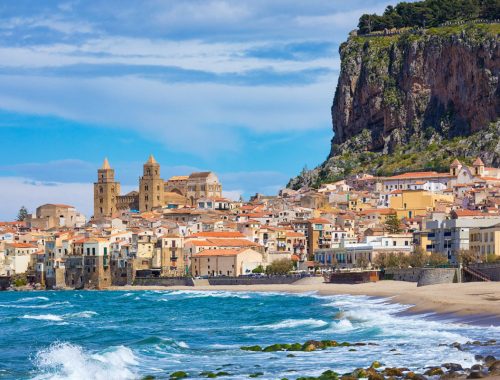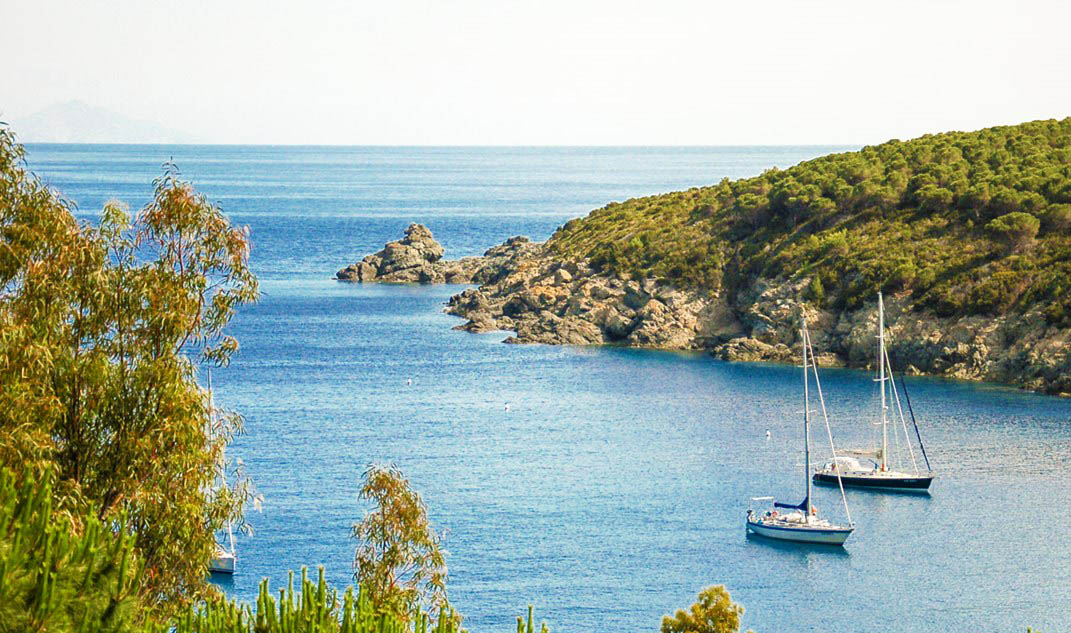
How wonderful it is to sail between these 3 stunning islands – Elba, Capraia and Corsica
A 7-day itinerary that begins in the elegant atmosphere of Punta Ala, continues to the quiet and unspoiled corners of Elba and Capraia Island, and ends in the wild nature of the Corsican coast.
The benefit of sailing along the Italian coasts is that it only takes a few miles to explore completely different landscapes and cultures; get to know this unique blend of pure beauty, feelings, and magic. This is exactly what this seven-day route provides, allowing you to “stroll” along the Tuscan coasts and discover the wonders of the Tuscan archipelago as well as the rugged coasts of nearby Corsica in less than 250 miles. Places that offer a variety of scenarios and atmospheres, with the common denominator being us, who travel with the wind, in the rhythm of relaxation and curiosity of the traveller who wants to escape from everyday life in order to return richer, healthier, and more aware of the nature that surrounds us.
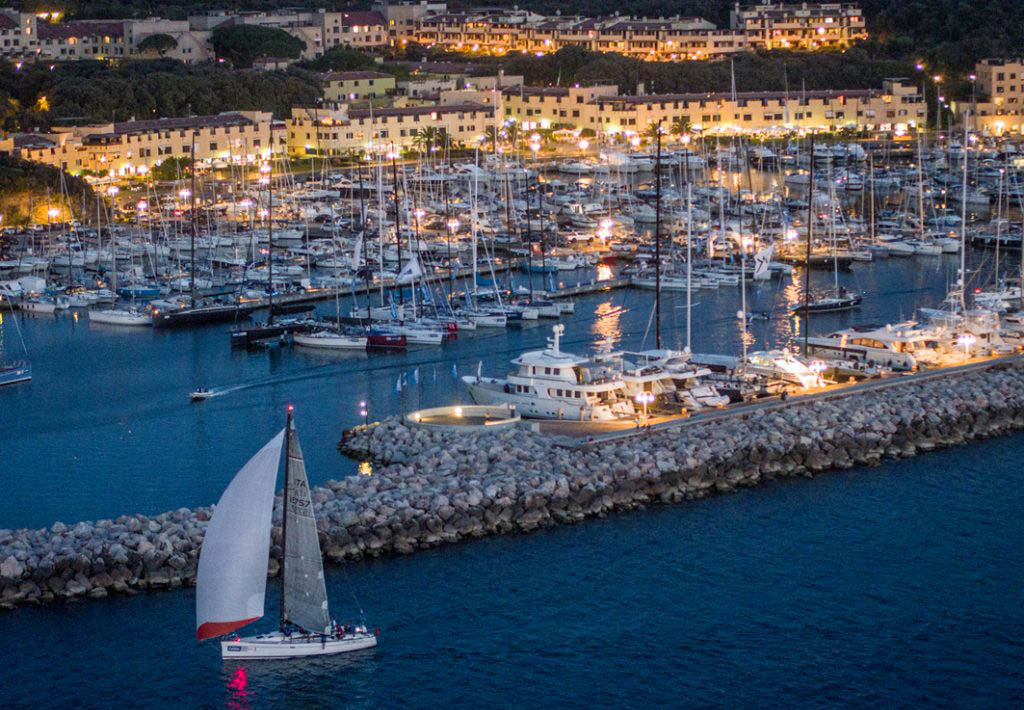
Day 1 – Marina di Punta Ala
The beautiful marina in Punta Ala is where you will embark on your adventure. It is a tourist harbour protected by a breakwater and is well-known among sailors as the birthplace of the Luna Rossa in the 2000 America’s Cup. Everyone enjoys strolling along its lovely promenade, admiring the moored yachts, and sipping a drink while watching the sunset. After checking in, you can visit the small beach at the west end of the marina, the large town beach, swim in the small Cala del Barbiere, or visit Cala Tartana and Cala Tartanella on Punta Ala’s southern tip.
If you prefer to explore the city, begin at the original parish church of Consolata, built in 1961, with its unique wood and copper hut design, and then proceed past the Hidalgo Tower, which dates back to the sixteenth century. Punta Ala Castle, built by the Medici family on a cape southeast of town, is also worth a visit, as are some famous sea-view villas such as Villa Lorenzini, Villa Di Salvo, and Villa Rusconi-Quiriconi.
Discover the best boat rental offers in Tuscany
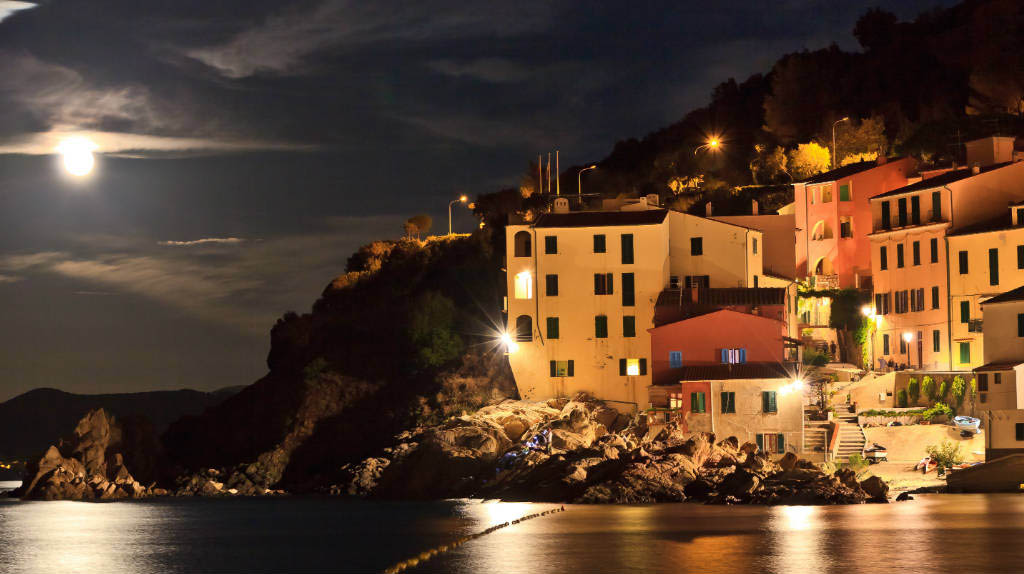
Day 2 – Punta Ala – Marciana (Elba), 30 miles
The following morning, we set sail for Elba, where our first stop is Marciana Marina, a small settlement of only 5 square kilometres but boasting of a lush nature that develops around a beautiful coast with elegant market squares and well-kept houses immersed in the greenery of the hills or with a view of the coast. Marciana Marina harbour provides excellent shelter from the winds (Oštro and Lebič) and has 115 moorings on the sandy and rocky seabed.
Alternatively, Portoferraio or Golfo della Biodola are nearby options for disembarking, but Marciana Marina, with its magnificent views of Monte Giove to the west and Monte Perone to the east, provides one of the most stunning seascapes of Elba Island that can be observed from the sea. The villages of Poggio and Marciana, which appear to be carved into Monte Capanne, complete the picture, which has the appearance of a postcard of extraordinary beauty.
This seaside town is best known for its calm and relaxed way of life, as well as its ancient streets. Among the beaches, you can choose between La Marina, which represents the city’s waterfront/coast, and the nearby “Cotone” cliff, which is part of the ancient district of Borgo del Cotone and awaits you with its smooth and flat rocks that allow you to completely relax.
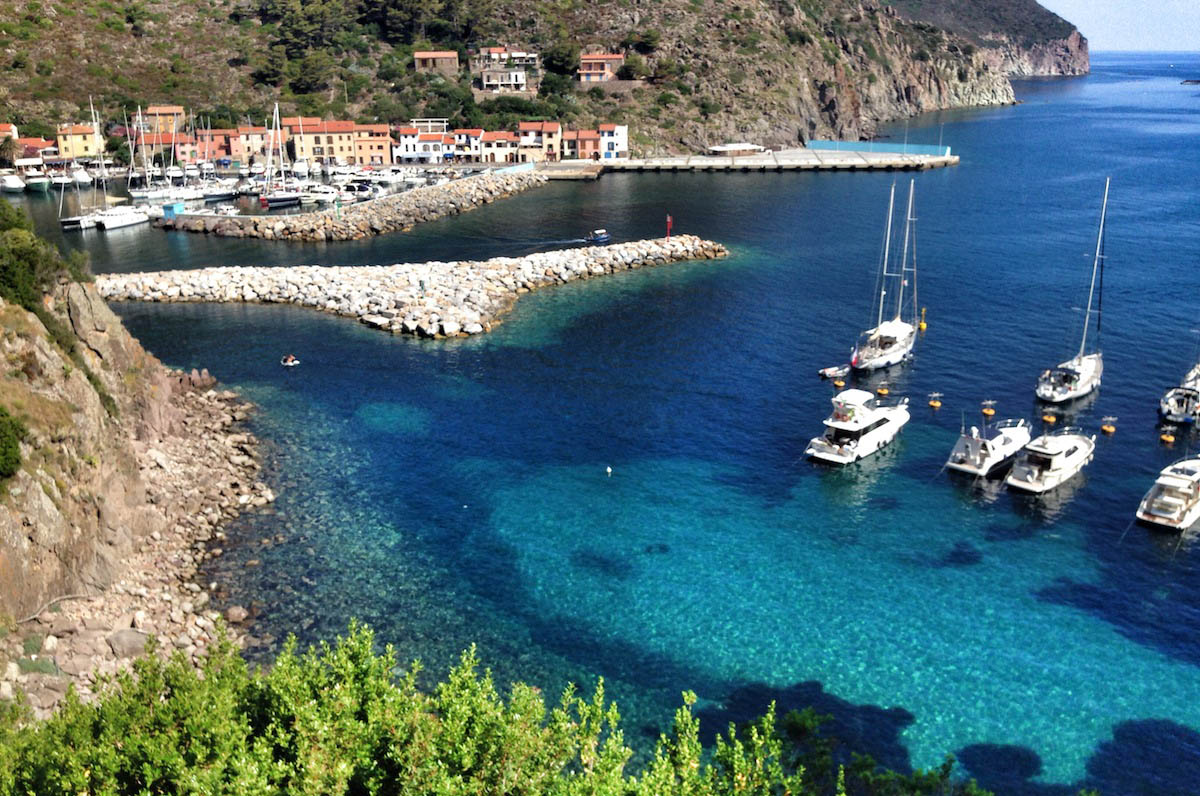
Day 3 – Marciana (Elba) – Capraia, 26 miles
We raise the anchor and are already on our way to Capraia, the westernmost of the Tuscan islands, where a prison operated from the nineteenth century until 1986. This volcanic island has an extremely rocky appearance but a beautiful view of the untouched sea. A picturesque marina surrounded by a small village and located in a beautiful harbour with a rugged shape that looks like a pirate’s haven is the best place to moor. The lighthouse and tower overlooking Capo Ferraione distinguish the harbour bay. Here you can moor on piers and on the shore, on a sand and seaweed seabed with a depth of 5–10 metres.
Let’s sail around the island to get a sense of its true essence. In the eastern part, you can admire valleys that open into bays where streams merge into them, pebble beaches, and secluded caves. Cala Rossa, a beautiful bay about 100 metres wide and a charming harbour with a contrast between grey lava stone and bright red basalt, is not to be missed in the south. However, the seabed is not stable here. Cala del Moreto is located on the western side of cape Punta Zenobito and has a sandy and rocky bottom that is 10-15 metres deep. Instead, the banks on Capraia’s west side are high and rocky, concealing more caves and natural arches. The most famous cave is Bue Marino, a 60-meter-high cave with a beach that opens into a rocky cliff in the island’s south-eastern corner; the most famous arch is the Cala del Reciso arch, which has two pebble beaches, the first immediately to the left of the larger natural arch, and the second almost in the centre of the bay, also immediately to the left of the second natural arch (also called “Recisello”). Swimming allows access to two pebble beaches, as well as swimming under the Recisello arch.
Discover the best boat rental offers in Tuscany
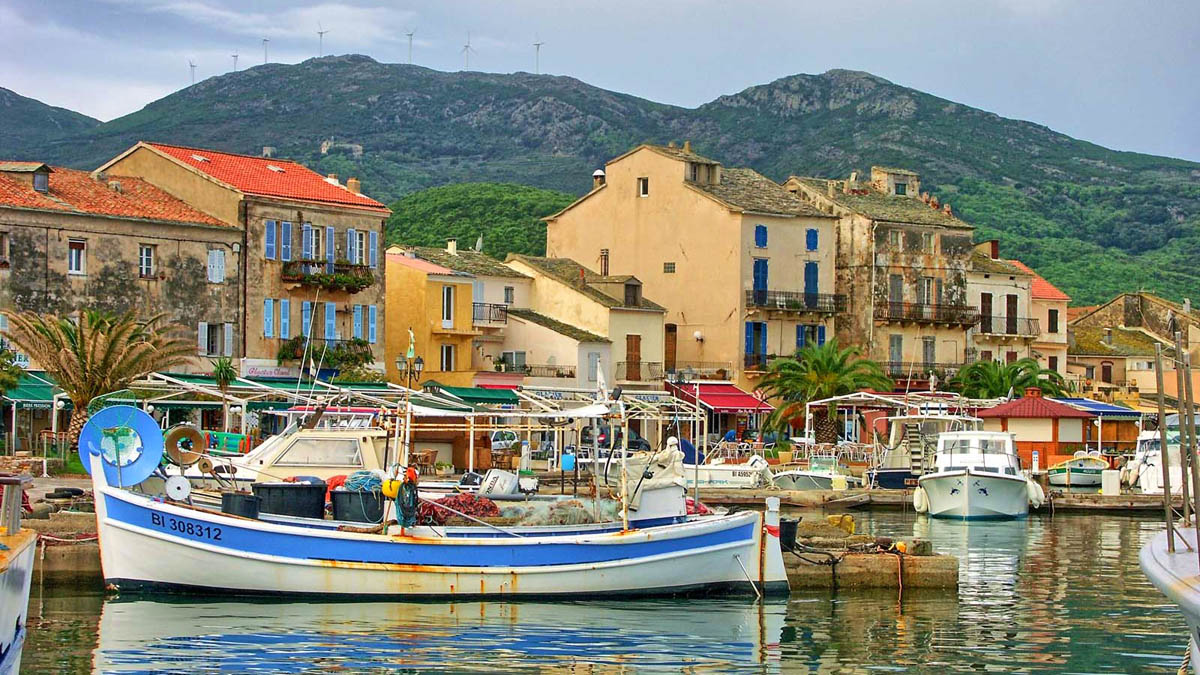
Day 4, Capraia – Macinaggio, 20 miles
The itinerary takes us to Corsica on the fourth day, as we sail 20 miles to Macinaggio, which got its name from the windmills and is the main port of Cape Corso (Cap Corse). A natural bay that had already been used as a military port by the Greeks, Romans, Saracens, and finally the Genoese, until the modern facility transformed it into an important tourist port. Traditional fishing boats still dock here, and a small auction is held in the morning where fresh fish is sold.
Tamarone Beach, one of the region’s most valuable pearls, is particularly well-known in Macinaggio. This long stretch of fine white sand surrounds the magnificent, crystal-clear sea, deserving of a complete relaxation and silence stopover. From Macinaggio, there are several excursion routes that connect the various Genoese towers that overlook the sea and re-join the “Sentiero dei Doganieri” (Custom officer’s path). The 21-kilometre route is easily accessible: simply walk north along the harbour. If you enjoy diving and exploring the sea’s rich depths, you can visit Giraglia and Sainte Marie or explore some of the wrecks, such as the P47 and German WWII ships.
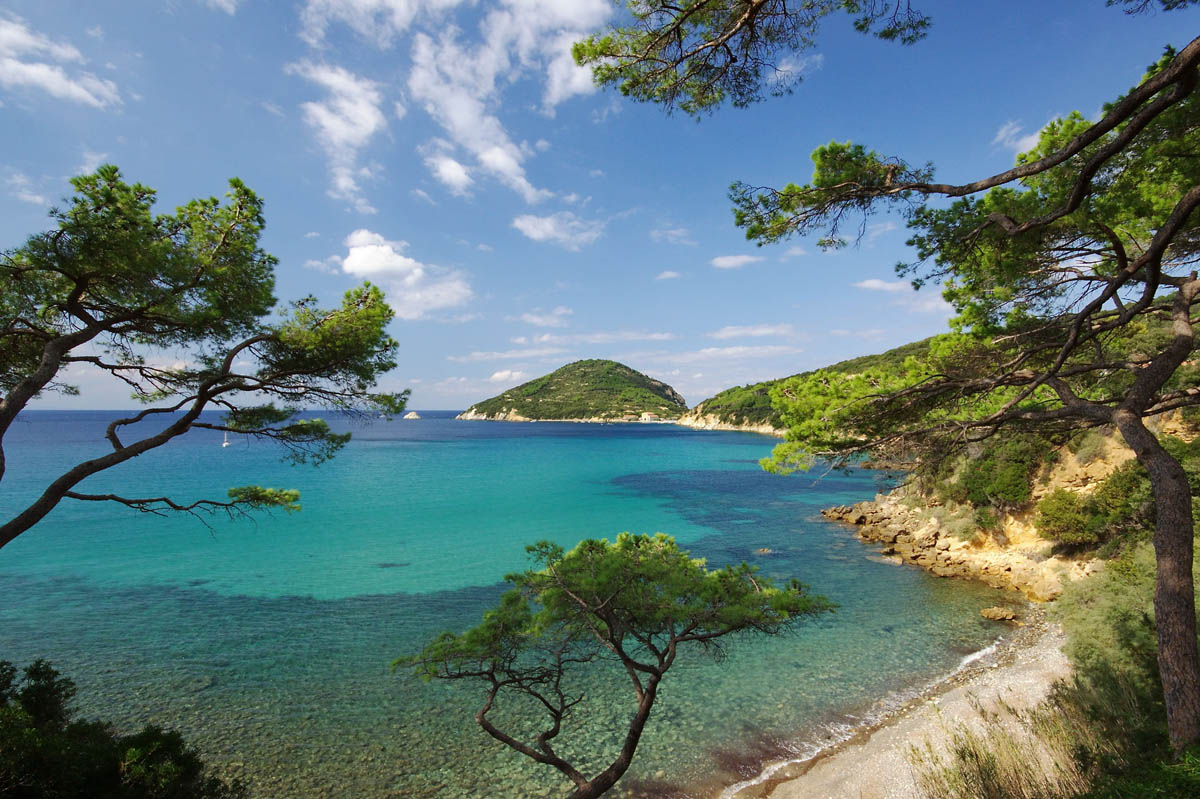
Day 5, Macinaggio – Golfo Stella (Elba), 30 miles
The time has come to sail across the Tyrrhenian Sea again to Elba, this time stopping on the southern coast, where Golfo Stella awaits us. It’s a beautiful natural bay with many rocks close to the shore in the east, pressed together with stones to form a small and low breakwater to protect the beach. You are welcome to anchor in the bay. A wonderful place to unwind and enjoy the crystal clear sea. Golfo Stella has two renowned beaches: Lacona beach, which is separated from the narrow Capo Stella peninsula and is generally more crowded, and the quieter Margidore beach, which has a bottom of fine gravel and sand and overlooks Golfo Stella with views of Capoliveri and the Calamita peninsula. The sea is between blue and turquoise in colour, completely clean, and has a sloping, sandy bottom that is ideal for swimming.
Those who enjoy hiking can take advantage of the stunning Capo Stella route, which will take you by bike or on foot along the cape on a path with a view of the sea while being surrounded by the green of the maritime pines with intoxicating scents and the yellow coat of broom. When you reach 147 metres above sea level, the view gives you a glimpse of the Golfo Stella to the east, which has a long coastline that extends to Innamorata Beach, as well as Lacona Bay to the west, which contains the same-named beach and the eastern cliff of Fonza.
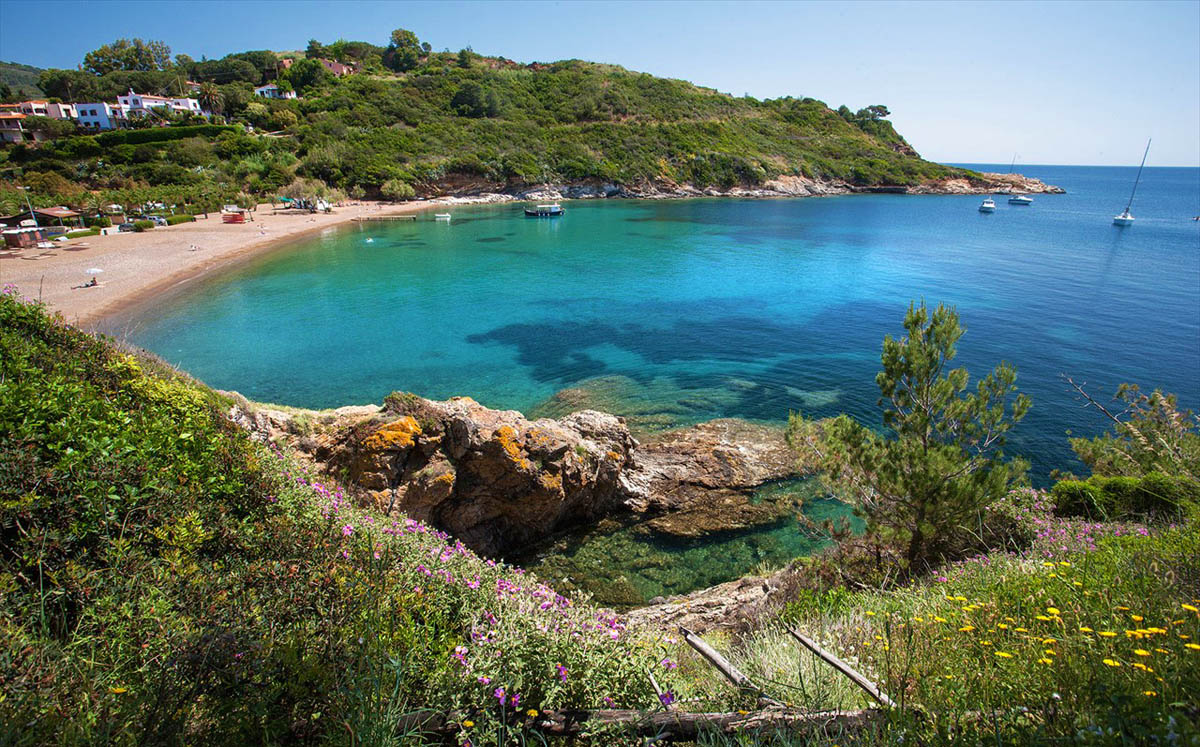
Day 6, Golfo Stella (Elba) – Porto Azzurro (Elba), 14 Miles
We continue our sailing itinerary by sailing to Porto Azzurro, a charming fishing town of ancient origin. In fact, it was once known as Portolongone, a name given to it in 1603 by Philip III of Spain, who intended to use it as a kind of fortress to defend the territory. The town harbour has 120 moorings and consists of a pier and two pontoons, in front of which are several floating piers with a sandy bottom ranging in height from 1.20 to 9 metres. Cala di Mola and Portoferraio Bay are two other nearby sheltered bays.
Piazza Matteotti, one of the largest and most beautiful market squares on the island, serves as the town’s central point. Walking through the historic centre’s narrow and intricate streets, one is immediately drawn to the magnificent buildings that bear witness to the ancient past of this place. Among the most famous is the Fortress of San Giacomo, an imposing fortress built in 1602 by Philip III to repel Saracen pirate attacks. The Church of Madonna del Carmine and the Church of San Giacomo Maggiore are also worth seeing.
The Sanctuary of the Madonna di Monserrato, located not far from the town of Porto Azzurro and accessible by foot, was built in 1606 to imitate the famous sanctuary of Barcelona, right here on Elba. La Pianotta, the most comfortable beach and the closest to the town centre is distinguished by a crystal sea, fine gravel, and large rocks. The beaches of Barbarossa, Reale, and the very special Terranera are not far away.
Discover the best boat rental offers in Tuscany
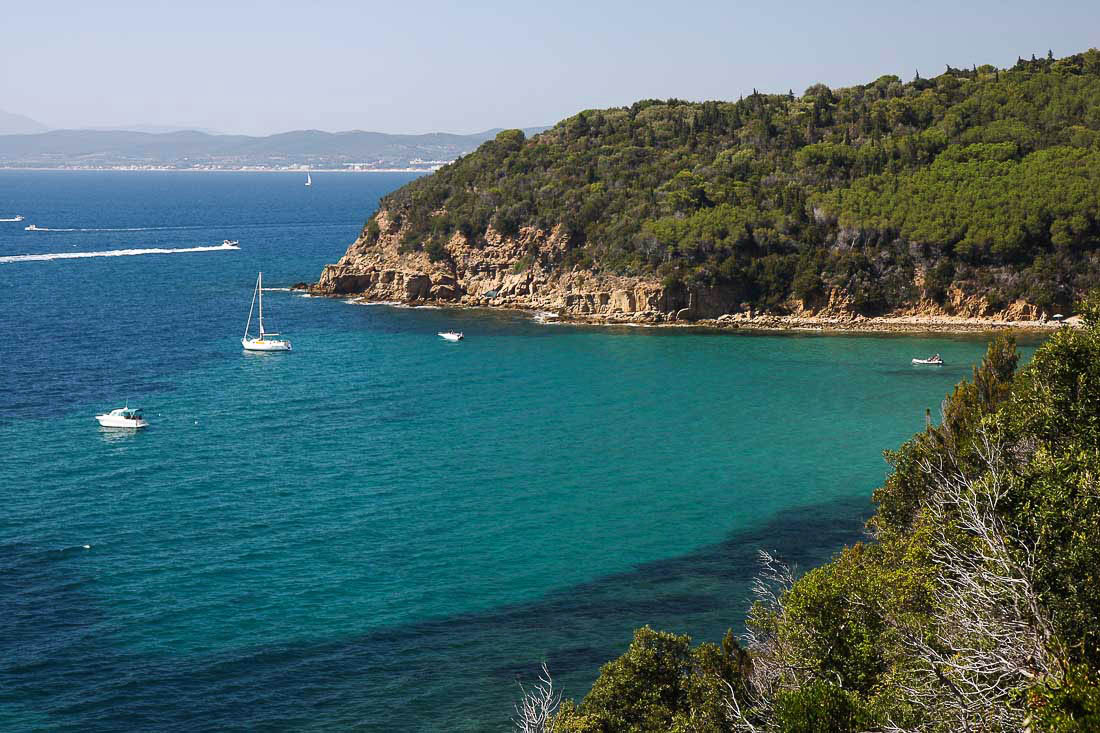
Day 7, Porto Azzurro (Elba)– Punta Ala, 20 miles
This wonderful itinerary is slowly coming to an end, along with the time spent exploring Corsica and the Tuscan Archipelago. A 20-mile sail returns us to our starting point, the marina in Punta Ala, which welcomes us with an elegant atmosphere that retains a strong maritime flavour. We disembark gradually as we sort through our individual thoughts and impressions. Thus, our desire for fresh sailing experiences is reignited…
You May Also Like
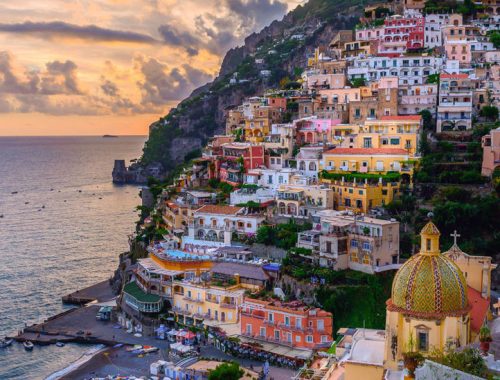
Amalfi Coast and Phlegraean Islands by sail
28/11/2023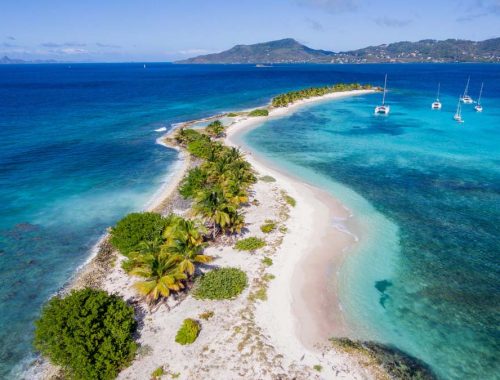
Caribbean: Grenada, the spice island that charms sailors
29/08/2025